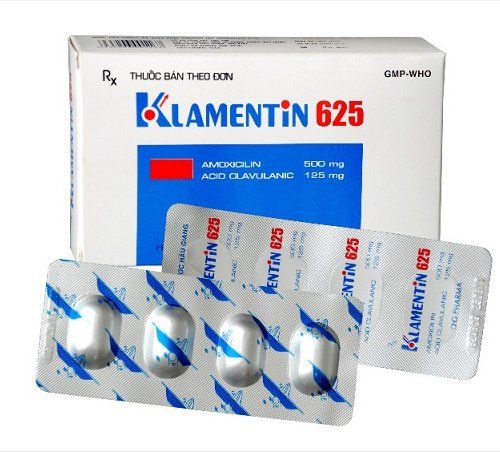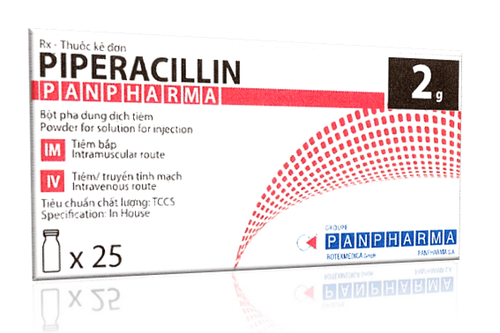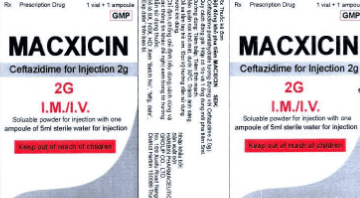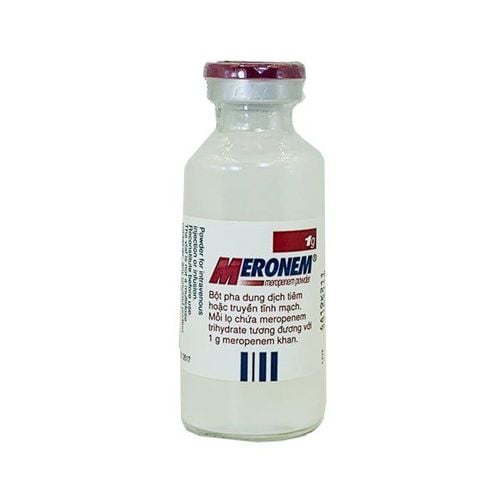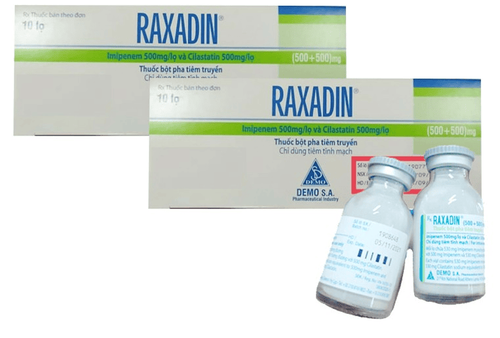This is an automatically translated article.
Artaxim is an injectable antibiotic whose main ingredient is Cefotaxime. Artaxim injection is used to treat bacterial infections in many different parts of the body. So let's find out what Artaxim drug works?1. What are the effects of Artaxim?
Artaxim is also used before, during, and after certain types of surgery to prevent infection. Artaxim injection belongs to the group of cephalosporin antibiotics. Artaxim will not work for colds, flu or other viral infections.
Artaxim is indicated for the treatment of serious infections caused by susceptible bacteria in the following diseases:
Lower respiratory tract infections Genitourinary tract infections. Gynecological infections, including pelvic inflammatory disease, endometritis, and pelvic soft tissue inflammation. Like other cephalosporins, Cefotaxime is not active against Chlamydia trachoma tis. Therefore, when treating patients with pelvic inflammatory disease, one of the causes of which is suspected to be caused by Chlamydia trachomatis, an anti-Chlamydia drug should be combined with treatment with a cephalosporin.
Sepsis . Skin and skin structure infections. Intra-abdominal infections including peritonitis Bone and/or joint infections. Meningitis and encephalitis. Before treatment, specimens should be cultured to isolate and identify the causative organism and evaluate its susceptibility to Cefotaxime. Treatment may be initiated before the results of the antibiotic sensitivity test are available. However, once the results are available, antibiotics should be adjusted according to the antibiogram. In certain cases of known or suspected gram-negative or gram-positive infections, or in cases of severe infections for which the causative organism has not been identified, cefotaxime may be used concomitantly with an unspecified antibiotic. aminoglycosides. The dose of both antibiotics can be used as recommended in the leaflet but will depend on the severity of the infection and the condition. Artaxim is contraindicated in people with hypersensitivity to cephalosporins, pregnant and lactating women.
2. How to take Artaxim?
Use Artaxim as directed by your doctor. Check the label on the medicine for exact dosing instructions. Artaxim is usually given by injection in a hospital or clinic.
Do not use Artaxim if it contains particles, is cloudy or discolored, or if the vial is cracked or damaged. Keep this product, as well as syringes and needles, out of the reach of children and pets. Ask your doctor how to dispose of these materials after use. If you miss a dose of Artaxim, take it as soon as possible. If it is almost time for your next dose, skip the missed dose. Go back to your usual dosing schedule. Do not take 2 doses at the same time.
3. Dosage of Artaxim
Treatment of uncomplicated infections:
Adults: Usual dose: 1 g IM or IV every 12 hours. Moderate to severe infections usually respond to 1-2 g IM/IV every 8 hours, but some infections (eg, sepsis) should be treated with 2 g IV every 6-8 hours. Severe or life-threatening infections may require 2 g IV every 4 hours. Meningitis and other CNS infections: For the treatment of meningitis or other CNS infections caused by susceptible bacteria, the usual adult dose of Artaxim is 2 g IV per day. 6 hours in 7-21 days. Gonorrhea :
Adults and Adolescents: Uncomplicated urethral, cervical or rectal gonorrhea caused by N. gonorrhoeae: 500 mg IM as a single dose. Disseminated gonorrhea: 1 g IV every 8 hours. Artaxim parenteral should be continued for 24-48 hours after the onset of improvement; therapy can then be switched to oral cefixime or oral cefpodoxime to complete at least 1 week of treatment. Lyme disease:
If Artaxim is used to treat early stage lyme disease in adults with acute neuropathy, the recommended dose is 2 g IV every 8 hours for 14 days (range: 10-28 days). If Artaxim is used when an injectable regimen is indicated for the treatment of lyme disease in patients with atrioventricular (AV) block and/or myocarditis associated with early lyme disease, the recommended dose is 2 g IV every 8 hours. for 14 days (range: 14-21 days). If Artaxim is used when parenteral therapy is indicated for the treatment of lyme arthritis in patients with evidence of neuropathy or when arthritis has not responded to oral regimens, the recommended dose is 2 g IV every 8 hours. hours for 14 days (range: 14-28 days). If Artaxim is used to treat late neuroleptic disease affecting the central nervous system or peripheral nervous system, the recommended dose is 2 g IV every 8 hours for 14 days (range: 14-28 days). Respiratory tract infections: For the treatment of community-acquired pneumonia in hospitalized adults, Artaxim is usually given at a dose of 1 g every 6-8 hours. If used for empiric treatment of CAP, Artaxim is used together with other anti-infectives.
4. Be careful when using Artaxim
This medicine should not be used if you are allergic to Artaxim or to similar antibiotics, such as cefdinir, cefprozil, cefuroxime, cephalexin and others. Before using this medication, tell your doctor if you are allergic to any medications (especially penicillin). Tell your doctor if you have liver or kidney disease, diabetes, a stomach or intestinal disorder, or a heart rhythm disorder. Do not take Artaxim to treat a viral infection such as the common cold or flu. Antibiotics can cause diarrhea, if you have watery diarrhea or bloody stools, tell your doctor. This medicine may cause abnormal results with tests for glucose (sugar) in the urine.
5. Undesirable effects of the drug Artaxim
Artaxim (administered by injection) is generally well tolerated. The most common adverse reactions were local reactions following IV injection. The most common adverse reactions (greater than 1%) were: Inflammation of the vein, rash, pruritus, fever, eosinophilia and, less commonly, urticaria and anaphylaxis, diarrhea, nausea, and vomiting. vomiting...
Less common (less than 1%) adverse reactions are:
Possible life-threatening cardiac arrhythmias following rapid dosing. Neutropenia, transient leukopenia, eosinophilia, thrombocytopenia, and agranulocytosis have been reported.





